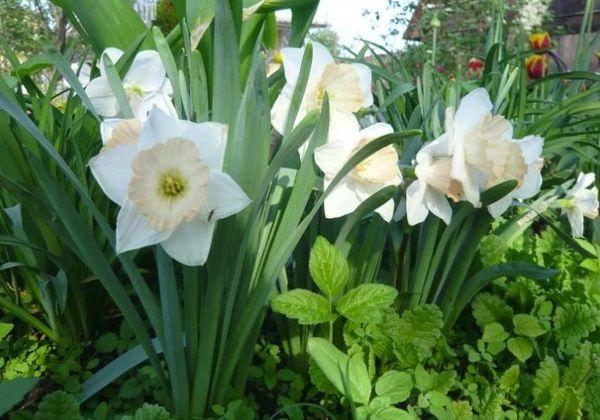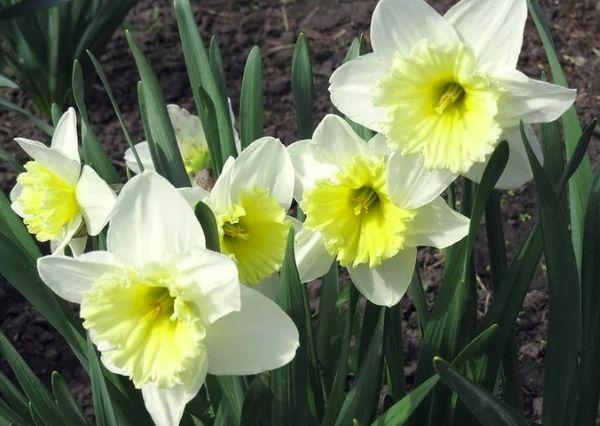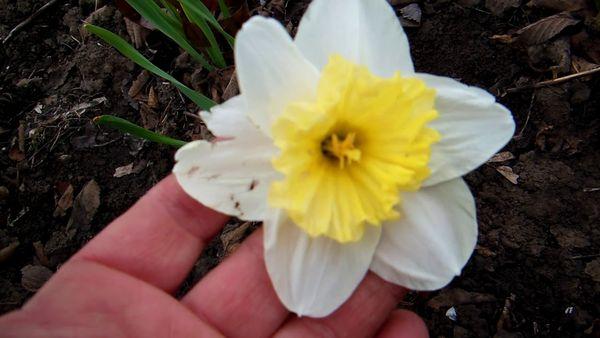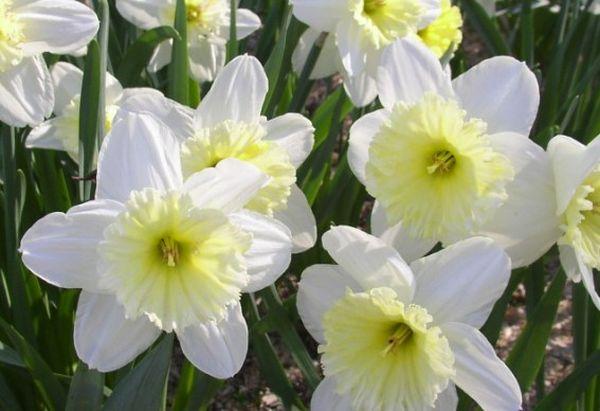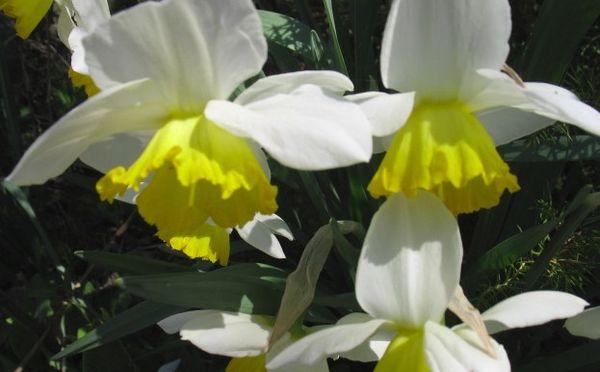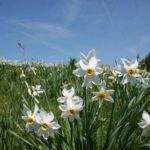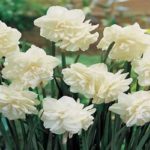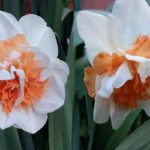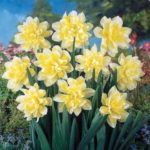Daffodils delight the eye with early and beautiful flowering. Breeders have bred many species, groups, and varieties of this plant. They differ in the shape, size and color of the crown, as well as in the timing of flowering. Narcissus variety Ice Follis belongs to early flowering plantings. Both gardeners and landscape designers love to use it in landscaping.
- Description and characteristics of narcissus Ice Follies
- Main positive and negative aspects
- How to grow the variety correctly?
- Time and place
- Planting material
- How to plant a double daffodil?
- Nuances of caring for the variety
- Watering and fertilizers
- How to trim?
- Diseases and pests
- Flower propagation
- Narcissus Ice Follis in landscape design
Description and characteristics of narcissus Ice Follies
The Ice Follies daffodil reaches a height of 35 centimeters. It belongs to the large-crowned group. The petals of the variety are white, the edges of the corrugated large crown are the same color. Its base is initially bright yellow, then becomes creamy. The diameter of the bud is 6-7 centimeters.
The variety blooms early; during flowering, Ice Follies emits a delicate floral aroma. The plant reproduces easily and is resistant to many diseases. Once cut, it lasts a long time in a vase.
Main positive and negative aspects
The advantages of Narcissus Ice Follies include the following factors:
- blooms early and spectacularly;
- easily propagated by bulbs;
- has a delicate aroma;
- The variety is disease resistant.
The disadvantages of the narcissus include the bareness of the clearing after flowering. But this can be corrected by planting other, later developing plantings.
How to grow the variety correctly?
In order for Ice Follis to quickly grow and bloom, you need to choose the right site, as well as the time for planting it. It is equally important to choose whole, healthy planting material.
Time and place
Daffodils are early flowering plants, so they should be planted in early autumn. By spring they have time to take root, and with the appearance of the first rays of the sun they begin to bloom. The peculiarity of growing daffodils is that the bulbs must undergo stratification, that is, kept for 2-2.5 months at a low temperature. Autumn planting meets these flower requirements.
The planting site for the Ice Follies variety is sunny, without exposure to cold winds. The best substrate is loam with the addition of compost. It is not recommended to plant the plant after bulbous plants, phloxes, and chrysanthemums.
Advice! If the gardener did not have time to plant the daffodil in open ground in the fall, he can do it in the spring, but during the winter the planting material must be kept in the refrigerator.
Planting material
When choosing bulbs, you need to pay attention so that they are not damaged, soft, or rotten. In the future, they can infect all plantings with fungal diseases. Before planting, the bulbs are kept for disinfection in a weak solution of potassium permanganate.
How to plant a double daffodil?
Planting bulbs in open ground is done as follows:
- the soil dug up in advance is leveled with a rake;
- holes are made at a distance of 10-15 centimeters from one another;
- sand is poured into each hole so that water does not stagnate at the base of the bulbs;
- planting material is laid out and covered with earth;
- the holes are watered and mulched with peat.
The daffodil is planted to a depth equal to the height of 3 bulbs.
Nuances of caring for the variety
They begin caring for the plantings immediately after the snow melts and the sun warms the earth. Rake out the mulch and water if necessary. The bushes are fertilized several times a season.
Watering and fertilizers
If the winter has had little snow, immediately after the onset of warmth, the daffodils are watered. When the plantings fade, this does not mean that they no longer need care. During this period, the development of the bulb continues, so further watering is necessary for the plants. It should be plentiful, but not frequent.
After the shoots hatch, the first feeding is done. It should consist of a nutrient mixture with a predominance of nitrogen, phosphorus and potassium. The next time the daffodils are fertilized during budding with potassium and phosphorus, then after flowering with the same composition for growing bulbs.
How to trim?
After flowering, the arrows with dried buds are cut off: they take away from the bulb the strength it needs to increase its volume. To do this, use sharp, disinfected instruments. The leaves cannot be removed, since respiration and development of the bulb pass through them.
Diseases and pests
Narcissus Ice Follis is resistant to many diseases, but can be affected by them if agricultural practices are incorrect. For example, this occurs when planting bulbs infected with pathogens that have not been treated with fungicides. Another reason is dense plantings. Daffodils can also get sick when planted in contaminated soil.
Parts of the bulbs affected by pathogens must be cut out and treated with antifungal drugs. If the disease has spread to most of the planting material, it is destroyed. In case of pest invasion, plants are treated with insectoacaricidal preparations.
Flower propagation
A gardener can propagate Narcissus Ice Follis by dividing the bush and dividing the bulb. To plant plantings using the first method, perform the following steps:
- Dig up a bush and separate each bulb separately.
- Planting material is cleared of soil and disinfected in low concentration potassium permanganate.
- Then the bulbs are dried and stored until autumn.
Propagation by dividing the bulb is done as follows:
- Take a large onion and divide it into 4-8 parts with a sharp knife.
- The cuttings are soaked in a disinfectant solution and dried.
- They are then placed in a bag of vermiculite, which is hung in a warm place.
Under these conditions, young bulbs will begin to form. They are planted first in pots, then, when they grow up, in a permanent place in the garden.
Narcissus Ice Follis in landscape design
Ice Follies bushes are planted as a separate spot, as well as in combination with other bulbous plants: muscari, hyacinths, tulips, daffodils of other varieties. Plants can be used to cover the bare legs of bushes and trees, and plant them next to hostas, astilbe, and ferns. Daffodils are also used for forcing indoors by the target date.


